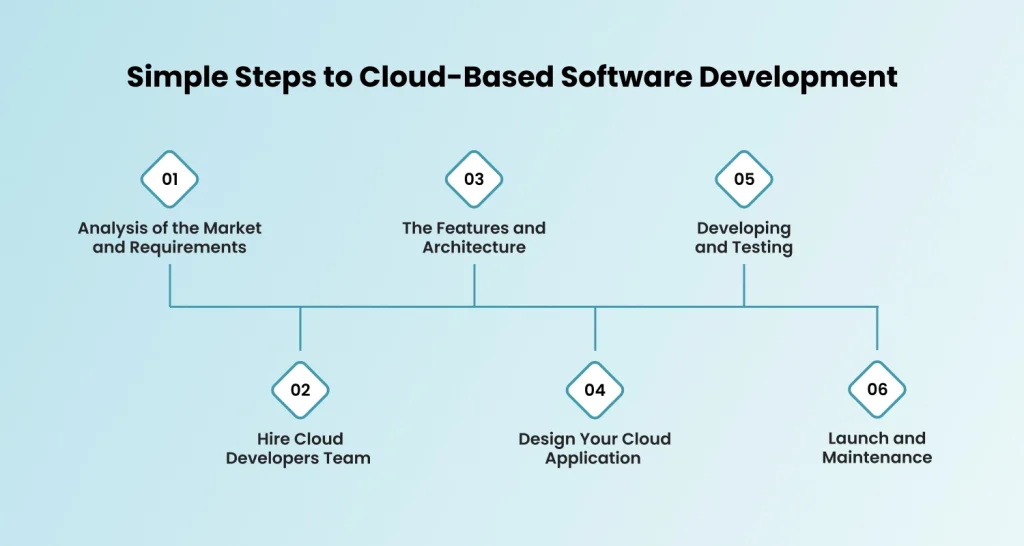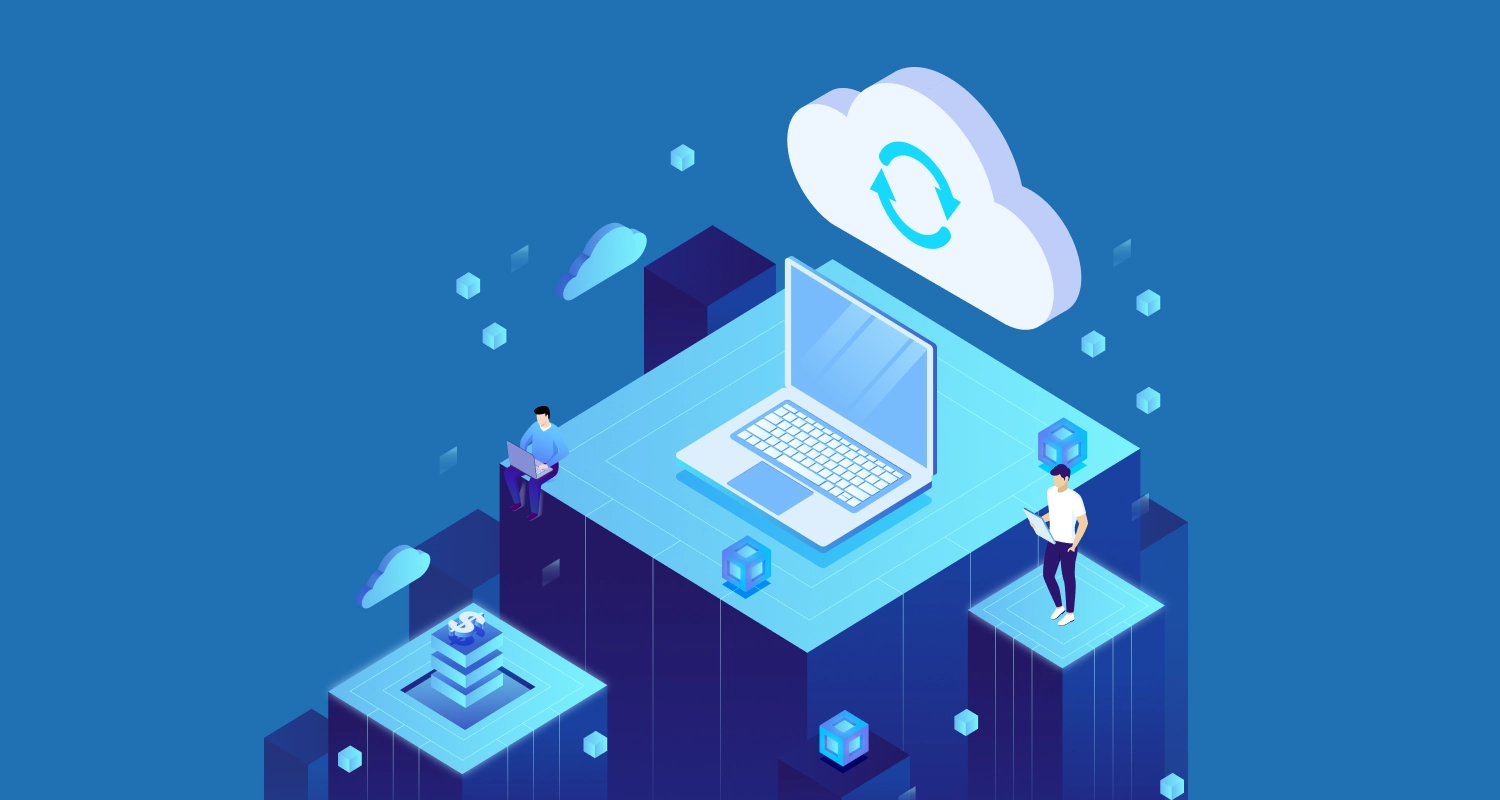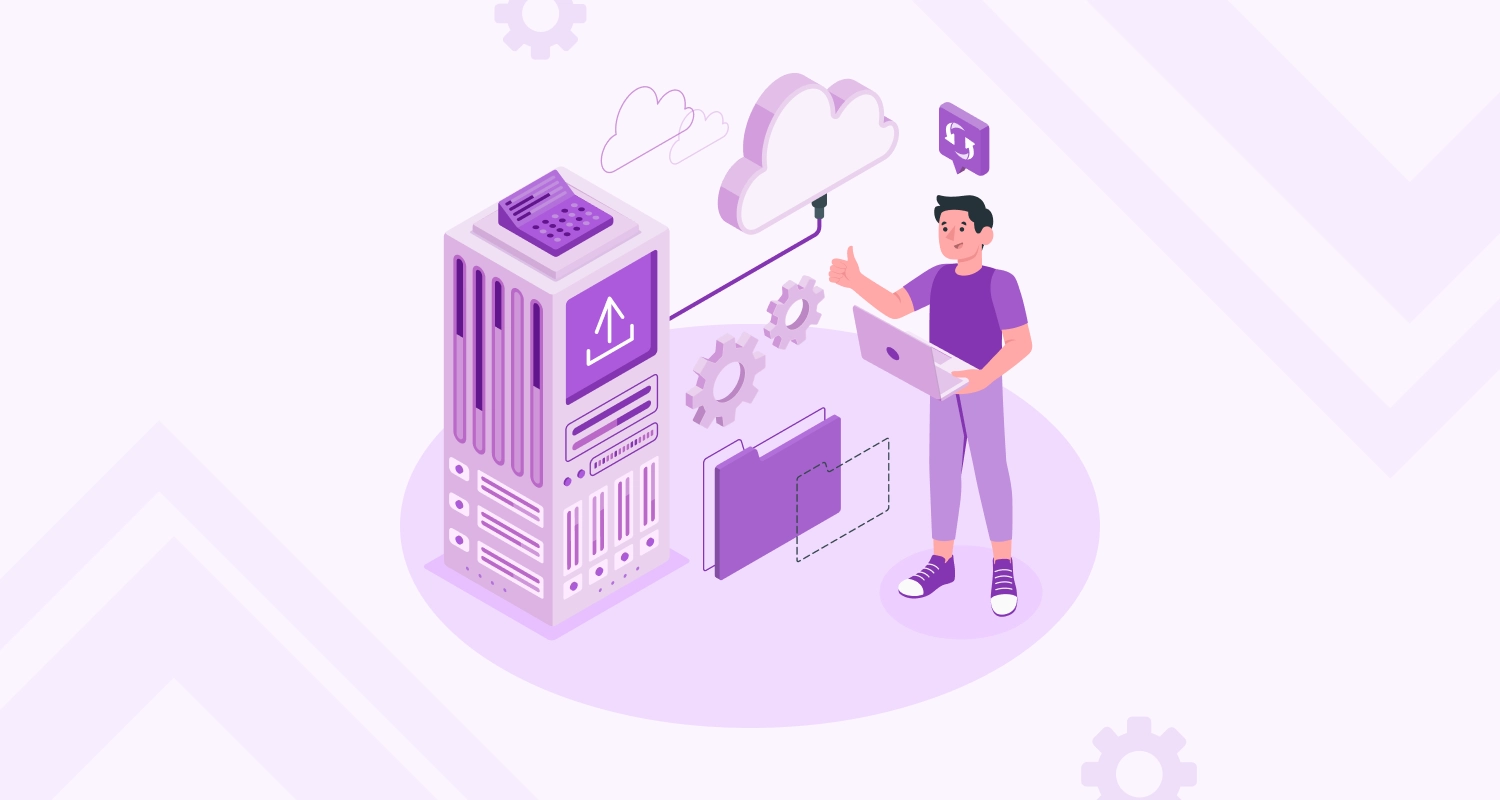The need for cloud-based applications has significantly increased globally. Consequently, there is now a greater need for cloud application development. As a result, the market for cloud computing has become more consolidated in recent years.
Almost everyone uses cloud apps and services, either directly or indirectly. Companies have also been using more cloud-based services and apps, even though they are only sometimes aware of it. Undoubtedly, you are utilizing a cloud app if you employ SaaS solutions. Cloud apps, however, are more than that.
Many still have questions about cloud apps, which we hope to dispel in this post. As an enterprise web application development company, we are aware of how critical it is for any organization to utilize cloud services appropriately. This article is for you if you want to know what cloud computing and cloud application development is, how your business may use them, or even if you just want to see some samples of cloud apps.
What is Cloud Application Development?
An internet-based application that stores and drives data online while some or all of its operations are carried out in the cloud is known as a cloud-based application. To comprehend this in greater detail, consider the following: a user interacts with cloud-based applications via a web or mobile browser. Here, the data processing is handled via an API and occurs on the distant server bae. The user’s device doesn’t interfere with the main operation; it only acts as an input device for the cloud app.
A web-based application is not the same as a cloud-based application. It’s crucial to look at a few traits that characterize cloud app development in order to comprehend its quirks.
Types of Cloud-based Solutions
Technologies related to cloud computing include a range of third-party services and resources, including storage, data servers, databases, and more. On a free or paid basis, the third party authorizes the computer reserves and its infrastructure. To put it briefly, you don’t have to worry about infrastructure upkeep when using the services, resources, and space.
Businesses can choose from four popular forms of cloud deployment:
1. Private Cloud: This serves as a safe haven for data, apps, and the web. It can be thought of as a private web system. One business uses private cloud services, which are not accessible to the general public.
2. Public Cloud – Only authorized devices can access the data stored in the public cloud resource. Generally speaking, public clouds offer the best flexibility and price.
3. Hybrid Cloud – Hybrid is regarded as both public and private for cloud app development. This is where you may share the data with third-party apps and on-device services, as well as with other variations for optimization and distribution.
4. Community Cloud – The deployment of a community cloud is comparable to that of a private cloud, with the exception that data exchange occurs between two or more organizations. A community cloud is useful when a nation’s government has multiple internal departments that require the same resources and infrastructure.
The aforementioned cloud deployment options can be used for a range of application services.
Similar to the deployment services, businesses can choose from a variety of cloud application development options. There are three main cloud development platform options available:
- Infrastructure as a Service (IaaS)
- Platform as a Service (PaaS)
- Software as a Service (SaaS)
SaaS app development services are about developing cloud-based apps for usage with web browsers and mobile apps. Customers can use this kind of service to apply the app online without needing to install it or configure it on any device. PaaS enables you to rent from a cloud provider everything you need to construct an app, including operating systems, infrastructure, and development tools. Platform as a Service typically streamlines the development process because backend maintenance is taken care of in the background.
IaaS is the term for a service provider that uses a public or private cloud to manage the servers, networks, storage, and visualization components of your business’s infrastructure. Apart from the infrastructure components, IaaS providers offer an array of services.
They include security tools (such as PCI-DSS compliance and data encryption requirements), resiliency tools (like backup replication and recovery), thorough invoicing, log access, tracking, clustering, and load balancing.
As a business owner, you have the option to use the cloud infrastructure services through an admin panel or an API. Additionally, you might manage programs and operating systems, while providers-like Microsoft Azure-offer resources for cloud development. The aforementioned models and techniques are used in the creation of prominent cloud applications such as Figma, Miro, Dropbox, etc.
Examples of a Cloud Application
The Cloud is used by many of the programs we use on a daily basis in one way or another. The development of cloud applications has produced incredible products and services:
- Miro is a virtual whiteboard that allows you to collaborate with other users in many entertaining and original ways.
- A potent cloud-based design tool called Figma, sometimes known as Lunacy, is becoming more and more popular because of how collaborative it is.
- Easily save your files on the cloud and make them accessible to anyone, anywhere, with Dropbox or Google Drive.
Among the features that distinguish most Cloud-based programs is collaboration. One significant benefit of is the ability to work together with people from anywhere in the world, even in real-time, however, there are other significant ones as well.
Simple Steps to Cloud-based Software Development

Determine your target market, problems, and demand in the necessary app before you start. Next, examine how your product may address its shortcomings. Following your analysis, you can follow these steps to properly design a cloud-based application:
Analysis of the Market and Requirements
To determine which applications are appropriate for cloud migration and to determine which cloud deployment model will work best for your company, you need first examine the requirements of the application market. When conducting research, keep in mind the objectives of your company as well as the essential elements (money, time, etc.) that make it run smoothly.
To learn about the problems that your future users will face, conduct market research. By addressing it, you’ll produce a worthwhile company solution that can satisfy customers’ demands. In order to formulate product needs and produce an end product that is both distinctive and competitive while appealing to your target market, you can also conduct competitive research on feature sets, business models, and rivals in the selected area.
Hire Cloud Developers Team
When you hire dedicated developers for cloud development, your chances of creating successful software are higher. You may quickly obtain a project planning report, an app development cost estimate, and a business model analysis from a trustworthy cloud app development company.
Your cloud application developers will assist you with selecting the MVP features, designing the app’s concept, and creating an app workflow before getting started on the real development process.
The Features and Architecture
Aspects like service model, app architecture, and cloud migration must be considered for an effective cloud-based app development process. The performance of your app is directly impacted by these choices. Therefore, it’s critical to talk about what works best with your outsourced crew.
The cloud architecture has made it easier to use cloud solutions and develop apps in a safe manner. Expert cloud app developers advise utilizing microservices-based advanced cloud architecture. For the service model, you can select any of the cloud deployment services (IaaS, SaaS, or PaaS) that were previously covered.
Additionally, you can use cloud migration to transfer your company’s data to a cloud server for improved processing and accessibility.
Design Your Cloud Application
The process moves on to the UI/UX design once all the important functionality and elements have been completed. In order to encourage an increasing number of end users to interact with the system, the designers must create an attractive and user-friendly interface. Additionally, the clients have the ability to see all of the changes and arrangements, leave comments on them, and provide input as it happens. Subsequently, the designers offer an overall project completion estimate.

Developing and Testing
Agile and Scrum development processes are used in the creation of cloud applications. Typically, the building process is divided into sprints, with each sprint consisting of ten working days. When developing such solutions, developing cloud-native apps is crucial since they provide more customization with easier-to-use procedures.
Prior to release, the product must undergo testing through a variety of quality assurance procedures. If your cloud application offers the intended user experience, then this complies. Full-cycle development outsourcing firms provide design, development, testing, and management services that lead to better-quality products.
Launch and Maintenance
You can make your cloud app available on the App Store (iOS) or Google Play (Android). Automated testing is being worked on by Google Play to expedite the approval process for apps. Google does not, however, explain in the result why your app was denied. Moreover, Google Play does not impose an equivalent price.
App Store assigns actual people to validate apps. The validators will request specific improvements from you before approving your app if they reject it. Additionally, keep in mind that the release of an app may need additional development and modification costs, as well as time. In relation to that, it’s time to disclose the typical cost of developing a cloud application.
Why Invest in Cloud-based Application Development – 6 Benefits
Every company can benefit from developing cloud applications because most data processing and storage needs are met by remote servers. In addition, there are several more unquestionable benefits of cloud computing technology, also known as cloud application development, which are briefly discussed here.
Saving Money
Cloud services only charge for the feature sets and amount of cloud space needed to support your application development model. This pay-as-you-go model is applicable to any cloud deployment services that balance reduced expenses with improved outcomes.
Security
The full-time responsibility of a cloud host is data security monitoring, which is far more effective than an in-house system. Government security standards are also easier to comply with when using cloud software development. Additionally, the cloud provides an automated response for data recoveries and updates.
Adaptability
Compared to hosting on a local server, developing cloud applications offers more flexibility overall. Cloud services can rapidly meet your need for additional bandwidth in place of taking a lengthy time to replace infrastructure.
Competitive Advantage
Additionally, chatbots and assistants-cloud services that use AI technology-provide a superior customer experience for the target demographic. For example, CMARIX created a cloud-based AI analytics platform for a major international bank to improve client retention and its CRM system.
Flexibility and Wisdom
You can stay informed by accessing information from any team, firm, gadget, or device using cloud application platforms. The fact that enterprises using cloud-sharing services report higher employee happiness and engagement than their local hosting providers is not unexpected.
Personalized customer data insights can also be used in cloud-native application development to improve the speed and user experience of data access. For example, CMARIX developed a cloud-based customer-focused data analytics platform for a top telecom provider.
Wide Variety of Options
By expanding the range of services and resources available for the business model, cloud-based solutions maximize their contribution to the success of the organization. From CRM to ERP solutions, web-based cloud applications can manage it all.
How much does it Cost to Build a Cloud Application?
The following variables affect the cost of creating a cloud software platform or application:
- Design of Products
- Product Attributes
- The Location of the Team
- Per-hour rate outsourced
- Project Magnitude and Intricacy
- Technology Stack Used
- Time Period
For a ballpark idea of the cost to design a cloud app:
- Generally speaking, SaaS cloud development services range in price from $20k+ USD, depending on what you’re trying to create.
- 300-500 hours of development effort are needed to create a basic cloud application, which might cost you about $7200 USD.
- It takes 800+ hours to construct a medium-to-complex cloud application, and the price range is $14k+ USD.
- The cost of cloud hosting is not included in the range above. Any cloud hosting platform, such as AWS, Microsoft Azure, or GCP, is an option.
- Taking all of the variables into consideration, your cloud development service provider can deliver an accurate cloud app development cost estimate.
- The nicest thing about using cloud app development services is that you can forget about worrying about data storage problems, complicated hardware, or server costs. Managing the development of cloud-based solutions is not an easy task, though, as there are always a few obstacles to overcome.
Conclusion
The main goals of cloud-based apps are to provide users with the finest possible cloud computing resources, state-of-the-art technology, and outstanding user experience. However, in order to reap these benefits and achieve remarkable success, your company must fully embrace the digital revolution.
We covered a lot of ground in this blog, including examples, cloud application development best practices, cloud deployment and service models, advantages of cloud apps, and the fundamental, step-by-step procedure for creating one. With all of the necessary information at your disposal, you can decide if creating cloud applications is worthwhile.
Sincerely, it’s really worth it, and once your cloud app is launched, you’ll notice the difference!
Why not attempt it then?
Make sure you have all the necessary cloud tools on board and the best mobile app development services at the proper pace of innovation. As a result, CMARIX is a well-known software development firm that uses DevOps best practices and techniques to create world-class cloud solutions.
Frequently Asked Questions
How to Build a Cloud Platform?
Six Essential Steps to Developing a Cloud Computing Infrastructure
Identify your company’s objectives and needs.
Hire a developer’s team.
Select features and architecture.
Design UI/UX.
Deploy and Development.
Launch your programs.
Why Should I Develop Applications in the Cloud?
The benefits of cloud development are numerous and include better collaboration, cost savings, and higher scalability and flexibility. Cloud apps can also be swiftly developed and implemented, allowing companies to react fast to shifting consumer demands and market situations.
What Are the Benefits of Developing a Cloud Application?
Advantages of Cloud Processing
Quicker release to market.
Quick deployments
Flexibility and scalability
Savings on costs
Improved cooperation
sophisticated security
Preventing data loss
What Are the Emerging Trends and Technologies in Cloud Application Development?
Hybrid Cloud
Serverless Computing
Edge Computing
Blockchain
IoT
AI/ML
Disaster Recovery
Kubernetes
Cloud Automation and Security
What Is Serverless Computing, and How Does It Fit Into Cloud Application Development?
A cloud computing execution strategy called serverless computing distributes computer resources based on demand. Developers can create and execute apps using a serverless approach, paying only for the precise resources needed, and not having to worry about managing any servers.







